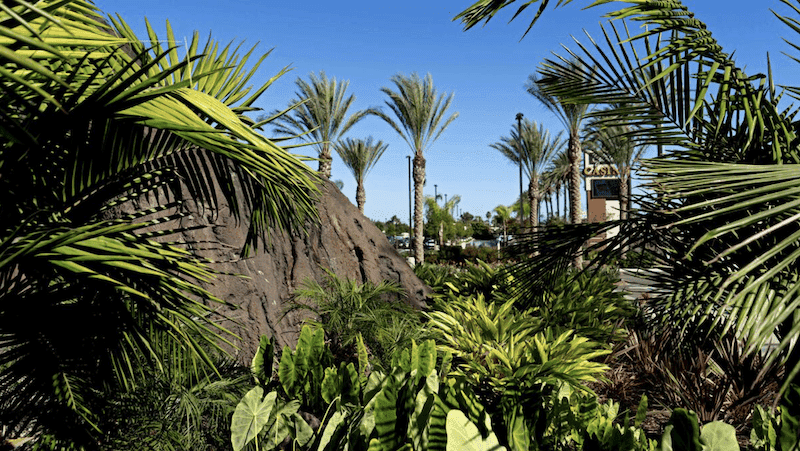Hawaii Gardens: Preserving Island Plants
Hawaii's lush landscape is home to a rich array of tropical plants, many of which are unique to its islands. The state’s unique geography and climate make it ideal for a diverse range of vegetable, fruit, and exotic plants to flourish. However, it also leaves the island susceptible to invasive species that threaten its unique biodiversity. Let's explore the plants that define Hawaiian gardens, their preservation efforts, and the community gardens that bring the island's inhabitants together.
Vegetable Plants to grow in Hawaiian Gardens
Most vegetable plants that can be grown on the mainland can also be cultivated in Hawaii due to the state’s rich volcanic soil and tropical climate. This includes common crops such as tomatoes, peppers, and cucumbers. But Hawaii's warm climate also allows for the growth of vegetables that are more unusual in the continental U.S.
One of these is taro, or 'kalo' in Hawaiian, a staple crop that's been cultivated in the islands for centuries. The starchy root is traditionally used to make 'poi', a nutritious Hawaiian dish. Another unusual vegetable is the 'ulu', or breadfruit. The large, round fruit is incredibly versatile and can be used similarly to potatoes when it's not fully ripe.
Hawaii is also known for its sweet potatoes, specifically the Okinawan purple sweet potato. This vibrant, deeply colored tuber is not just visually striking but also rich in antioxidants and flavor.
Nurturing Endangered Plants in a Hawaiian Garden
Hawaii is home to more endangered species than any other U.S. state, largely due to its isolation and unique habitats. Several endangered plants can be grown in local gardens to contribute to their preservation.
One example is the Alula (Brighamia insignis), often referred to as the 'Cabbage on a Stick.' This unusual plant is considered critically endangered, and few are left in the wild. It can grow well in pots, making it ideal for residential gardens.
The Silversword (Argyroxiphium sandwicense) is another endangered plant, found only on the slopes of Maui's Haleakalā volcano. While its natural habitat is restricted, with careful cultivation, it can be grown in home gardens.
Fruits of Hawaii: The Tropical Delights of a Hawaiian Garden
Hawaii's tropical climate allows for a stunning variety of fruits to be cultivated. Many are commonly found in mainland markets, like bananas, pineapples, and mangoes. However, the islands also grow more exotic fruits that are rarely seen on the mainland.
The starfruit or carambola, is a juicy, sweet-sour fruit that, when sliced, reveals a star-shaped cross-section. Another example is the rambutan, a fruit that resembles a hairy lychee and has a deliciously sweet and tangy flavor. Additionally, Hawaii's rich volcanic soil enables the cultivation of coffee plants, particularly in the Kona region.
Community Gardens in Hawaii
Community gardens in Hawaii play a critical role in preserving the islands' unique flora, promoting sustainable agriculture, and bringing communities together. The Kōkua Kalihi Valley Comprehensive Family Services manages one of the largest community gardens in the state, the Ho'oulu 'Āina Nature Preserve. The garden is home to a vast range of native plants and vegetables and serves as an educational hub for sustainable farming practices.
Another is Māla‘ai, the Culinary Garden of Waimea Middle School. This outdoor learning center emphasizes the importance of 'aina-based (land-based) learning and is recognized as a model for garden-based education in Hawaii.
Invasive Species that Threaten Hawaiian Gardens
While Hawaii's biodiversity is a source of pride, it's also at risk from invasive plant species. Invasive species like Miconia (Miconia calvescens) and Albizia (Falcataria moluccana) threaten the natural biodiversity and can cause significant ecological disruption.
Efforts to control these invasive species are ongoing and include public education, biological control methods, and removal programs. Residents are encouraged to plant native or non-invasive species in their gardens to help preserve Hawaii's unique ecosystem.
Hawaii's gardens reflect the islands' vibrant culture, rich history, and unique biodiversity. Through careful cultivation, preservation of endangered species, and the promotion of community gardens, Hawaii's residents continue to honor their environment while providing a model for sustainable gardening practices in a tropical climate.



.png)
.png)
.png)

.png)